Spey Casting With The Non-Dominant Hand on Top

By Jeff Hickman
SOMETIMES YOU LEARN SOMETHING VALUABLE COMPLEETLY BY ACCIDENT.
Last Summer I was on the phone with a good friend and regular client catching up. He was bummed to not be able to fish during his favorite Fall season due to a major shoulder surgery he had on his dominant right shoulder a few months previous. Extensive physical therapy was helping but he still had a lot of pain and his doctor suggested he hold off on fishing for several more months. Being the steelhead addict that he is, I knew that taking the season off would not be good for his mental health. So I told him to come out for a three day Deschutes camp trip and I would teach him to cast left handed which would give his right shoulder a much easier job.
He, like many guys that I fish with, had learned to Spey cast back in the days of the 14ft 9weight and Windcutter with unnecessary cheaters. This era of Spey fishing engrained many with a fast, erratic and borderline violent muscle memory. He had always struggled to sweep and cast slow enough for the modern short Scandinavian and Skagit heads to work properly. With his right hand on top, his fly needed frequent removal from the bushes behind him despite my nearly constant pleas for him to slow down.
So when he showed up for his trip he remained skeptical that he could learn to fish left handed or effectively fish without hurting his shoulder. But I made it very clear that he was to only fish left handed and he was not allowed to risk further injury by putting his right hand on top while casting. For backup, I claimed that his doctor had called me to make sure of this.
With no muscle memory with his left hand on top, I started my instruction from the ground up, walking him through the most important casting steps
Read More »Flat Water Nymphing
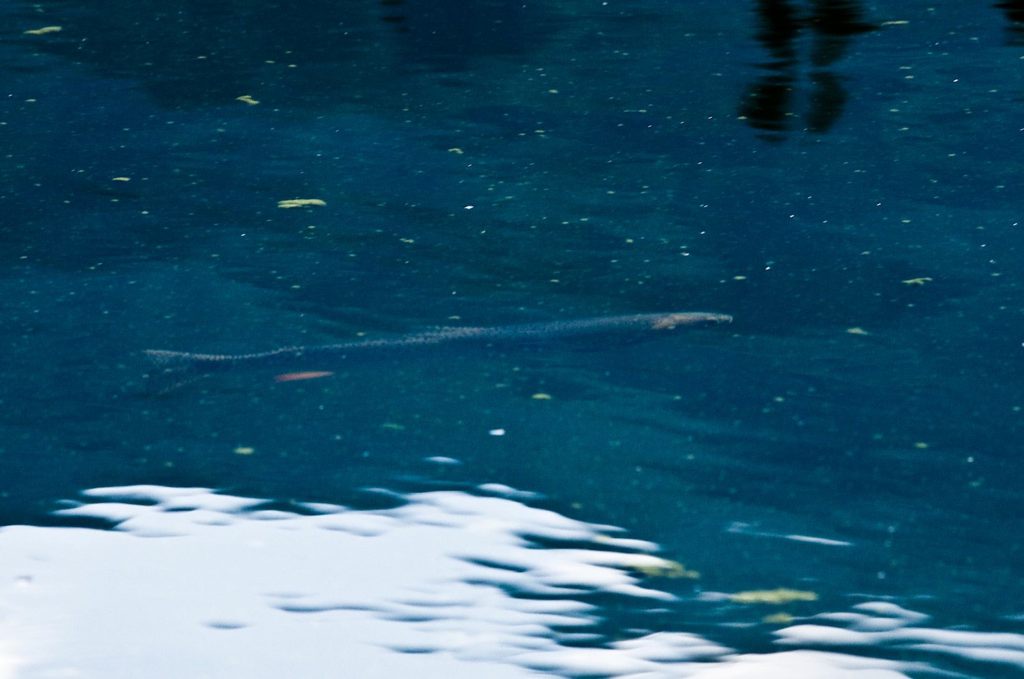
By Kent Klewein
Fishing nymphs in slow water is a different game.
The past few years, Louis and I have grown very fond of one specific pool tucked up in mountains of the southern appalachia. We visit it regularly because of the bounties of trout that it sustains and nurtures year round. We nicknamed it the “lazy boy pool”, because it constantly has food entering the pool and its slow moving water and deep water cover requires little energy for fish to feed round the clock. It’s loved by lazy trout and they in turn grow big and fat. Despite the large numbers of trout the pool holds, angler won’t find it to be a cake walk for catching them. To have success in this pool you have to bring your A-game. The fish have grown wise to fly anglers and the glass calm and crystal clear water adds further to the overall challenge. Trout here, get to examine your flies for long periods and they regularly dish out more refusals than eats. It’s had Louis and I pulling our hair out on multiple occasions. If we need our ego’s checked, this is the perfect place for us to do that. It never fails to reminds us we are far from having it all figured out. The slightest mistake by an angler will send wakes across the water alerting all the trout in the pool, and when that happens, the fish get lock jaw.
When you’re lucky you can get the fish to rise to dries at lazy boy pool, but it’s always hit or miss unless a hatch is in progress. The most success we’ve had fishing it has come from drifting nymphs subsurface. It’s not your average-Joe nymphing water though. It requires a niche nymphing techinque that I like to call “flat water nymphing”. Because the water moves so slow through the pool, bites can be very subtle and extremely hard to detect. Often the only signal of a bite
Read More »Better Techniques for Tying Flies With Foam.
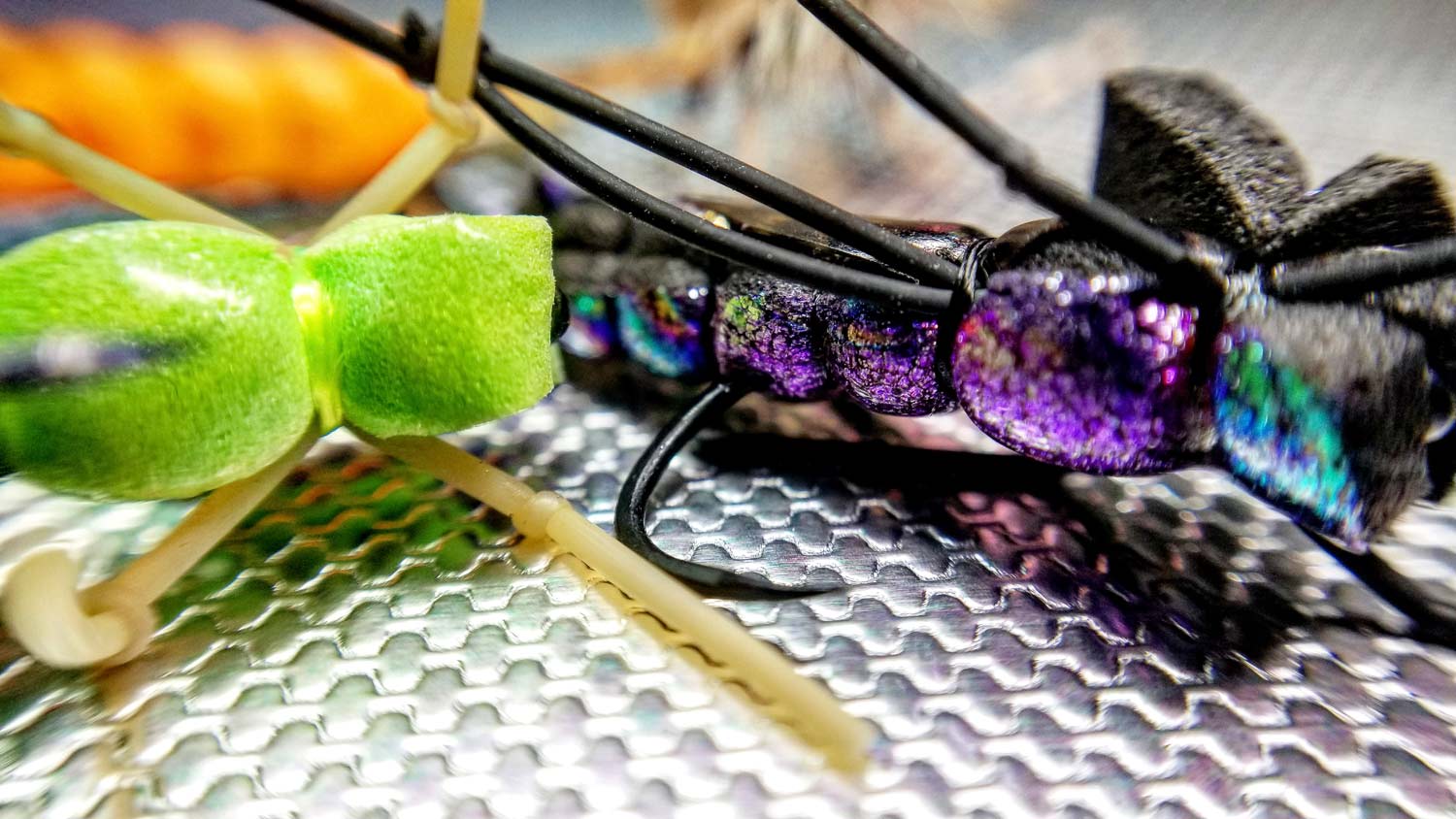
By Bob Reece
Mid summer kicks off the season of foam for most of the trout fisheries that I frequent.
Foam patterns are a blast to fish. However, the process of tying with this buoyant material can produce frustration at the vise.
If I had to rank my techniques for working with foam, “pinch and cinch” would be at the top of my list. Foam can have a mind of its own. Attaching this springy material to the hook when and where a tier wants can be challenging. One key step to this is compressing the foam with your thumb and index finger when you take thread wraps around the material. This process results in tight wraps that hold the foam in its intended location. It also lowers the stress on the thread. This reduces the risk of breaking the thread or cutting the foam if a heavy gauge thread is being used.
When creating foam flies, I think of the process as sculpting. Foam’s pliable nature allows the tier to twist, stretch and bend it into the desired shape and position. By applying slight tension to the foam a thinner profile is created. A reduction in that tension allows the foam to return to its original dimensions.
The excess use of glue should never take the place of proficient tying techniques. Yet, when tying with foam super glue in is essential element of long lived patterns. Foam is a smooth and slippery material. This property causes it to rotate and slide on the hook shank without the presence of glue. As a result of this, I always
Read More »One Fly, One Cast, One Tarpon
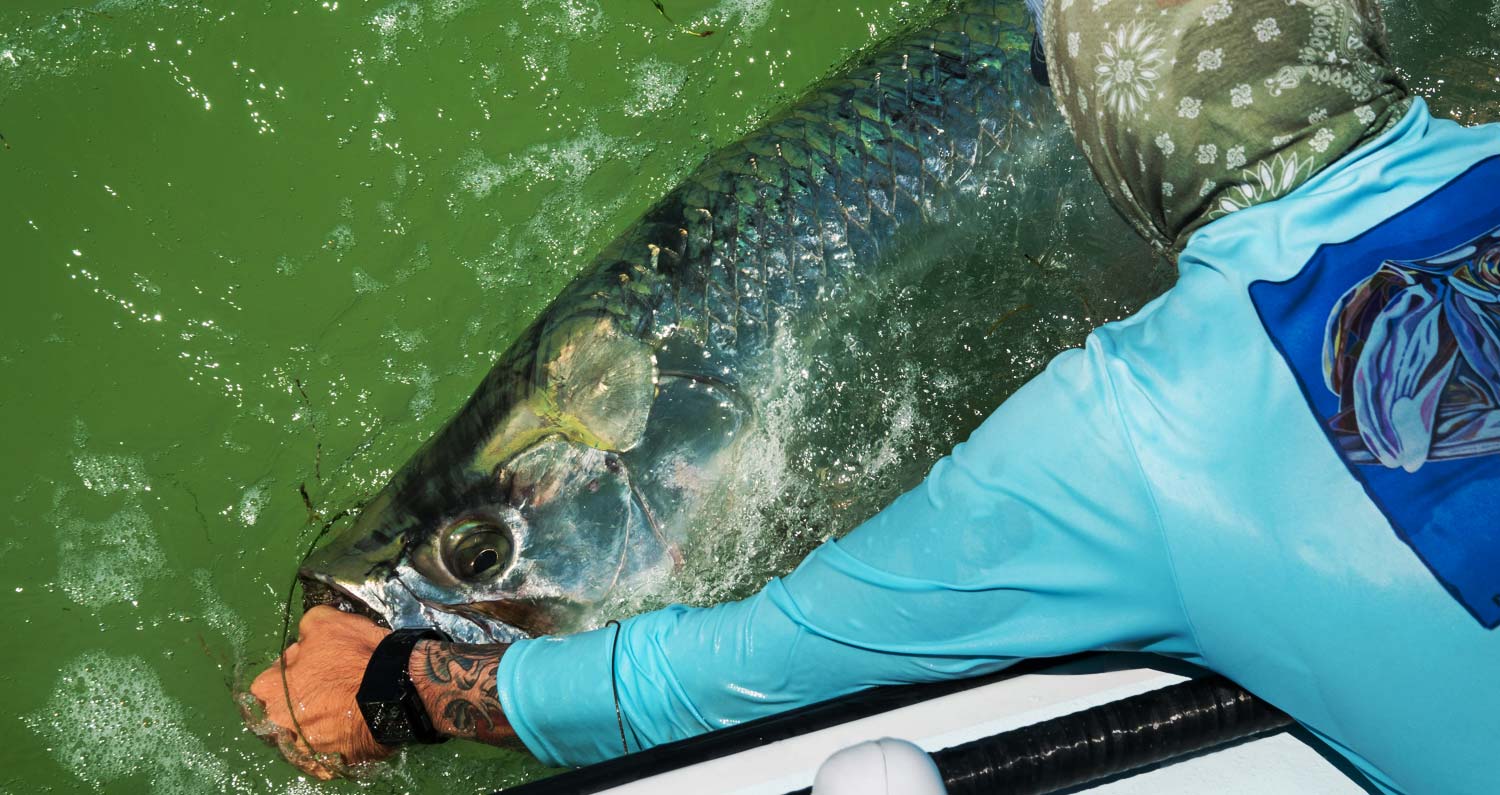
The bow of the skiff rises and falls under my feet as my eyes scan the vast expanse of blue and green.
We call this riding the bull. Balancing on a casting platform as the boat bobs and shifts in the surf. Out on the ocean side, that’s where you find migrating tarpon. These big fish push past in schools, often single file. It’s challenging fishing and today has been no exception. We’ve seen plenty of fish and plenty of refusals and disappearing acts but no open mouths or flared gill plates.
It’s late on the second day of fishing. We haven’t seen a fish in a while and haven’t fed one all day. My buddy Johnny Spillane and I each put a couple of nice fish in the air the day before, in spite of poor light. We had great expectations when we saw the beautiful blue sky this morning. Neither of us, or our guide Capt. Jessie Register, have an explanation for the attitude the fish are giving us, except that they are tarpon and that’s what they do.
A little red catamaran is cooking up the beach straight for us. It’s up on one hull and the guy is leaning out over the side. As he gets close, we are all wondering if we should be panicking. It really does look like he’s going to T-bone the skiff. It occurs to me that we are all watching the sailboat bearing down on us and that’s exactly the time a nice fish would swim by. I make a quick scan and, sure enough, there she is at two o’clock, and she’s big.
Read More »Sunday Classic / 3 Things I Learned By Not Catching A Permit
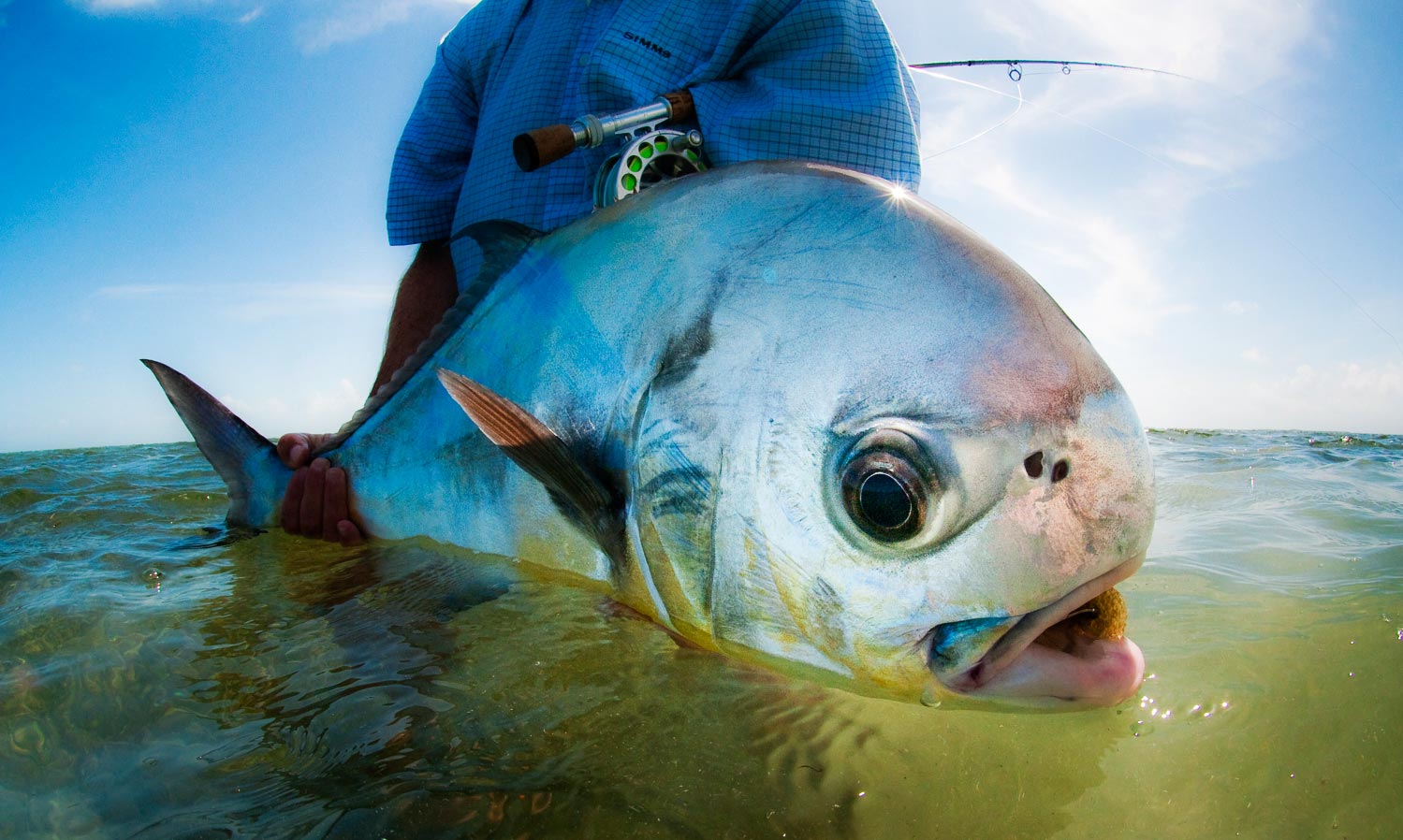
I AM NOT A MASTER PERMIT FISHERMAN. I THINK THAT’S EXACTLY THE THING I ENJOY ABOUT IT.
I like the challenge and if you’re looking for a challenge, permit have one for you. While I don’t consider myself an expert on the subject, I am learning and that puts me in a great position to share what I learn. Even if I am learning from my mistakes.
I had a great shot at a permit the other day and I totally screwed it up. Here’s what happened.
I was fishing with friends Joel Dickey and Rob Kramarz, both experienced flats guides. I was on the bow and we were fishing the early part of a falling tide. At twelve o’clock to the boat there was a cut in a small key and we anticipated that permit might be coming out with the tide.
As we poled slowly toward the mouth of the cut, I caught movement in my peripheral vision and turned to find a fish coming straight for the boat at two o’clock. It was an odd looking fish. Too light in color to be a permit and too dark to be a bonefish. As I struggled to identify it, the fish
Read More »Saturday Shoutout / Chandalar

A beautiful example of the healing power of fly-fishing.
This remarkable film, from the folks at Simms and Soul River, follows fourteen young people and five U.S. veterans as they float the Chandalar river in Alaska. They learn to row, to fly fish, and to thrive with PTSD.
“This is a story of how U.S Veterans can change lives and find purpose by volunteering their time. The participants come from different worlds and while they know that their experience with trauma is what initially binds them together, it isn’t what defines them.”
Read More »Fly Fishing Lights at Night
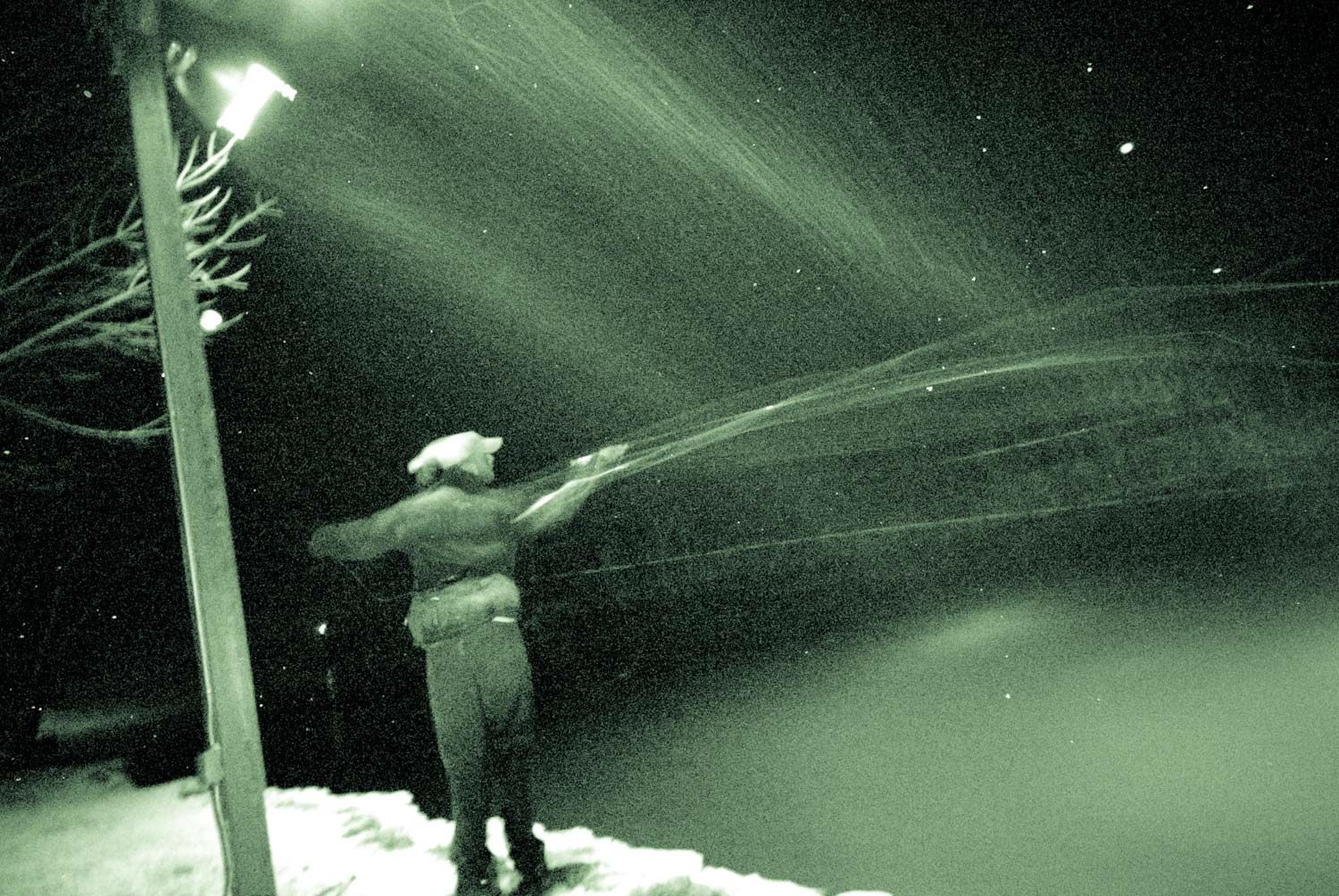
It’s long been known by fishermen, that bright lights shining on the water at night create fishing hotspots.
The lights attract plankton, which in turn, attracts the baitfish and other food sources that feed on them. Once you’ve got a good concentration of forage food hanging around the lights, it doesn’t take long before the larger predatory gamefish move in and begin making a feeding frenzy of the situation at hand. Using the lights as a perfect tool to coax and gather the food into a small area and the cover of darkness as camouflage, predatory gamefish will take turns darting into the light with mouths open to pack their bellies full. This feeding scenario reminds me very much of the relationship I have with my refrigerator. When I wake up in the middle of the night with my stomach growling, I know exactly where I need to head to get my quick food fix. The relationship gamefish have with lights on the water at night is no different. When available, gamefish will regularly utilize lights to locate and ambush food under the cover of darkness. Fly fisherman should always take the time to locate and fish lights on their home waters, because they will almost always provide consistent action.
If you randomly asked one of your fellow fly fisherman about targeting lights at night, they’d probably respond with success stories about either fishing lighted piers in saltwater or boat docks on freshwater lake impoundments. These are by far, the two most popular places fisherman prefer to utilize lights shining on the water at night, but it’s not the only places we should look. Fishing lights for trout
Read More »Something For The Window Shoppers
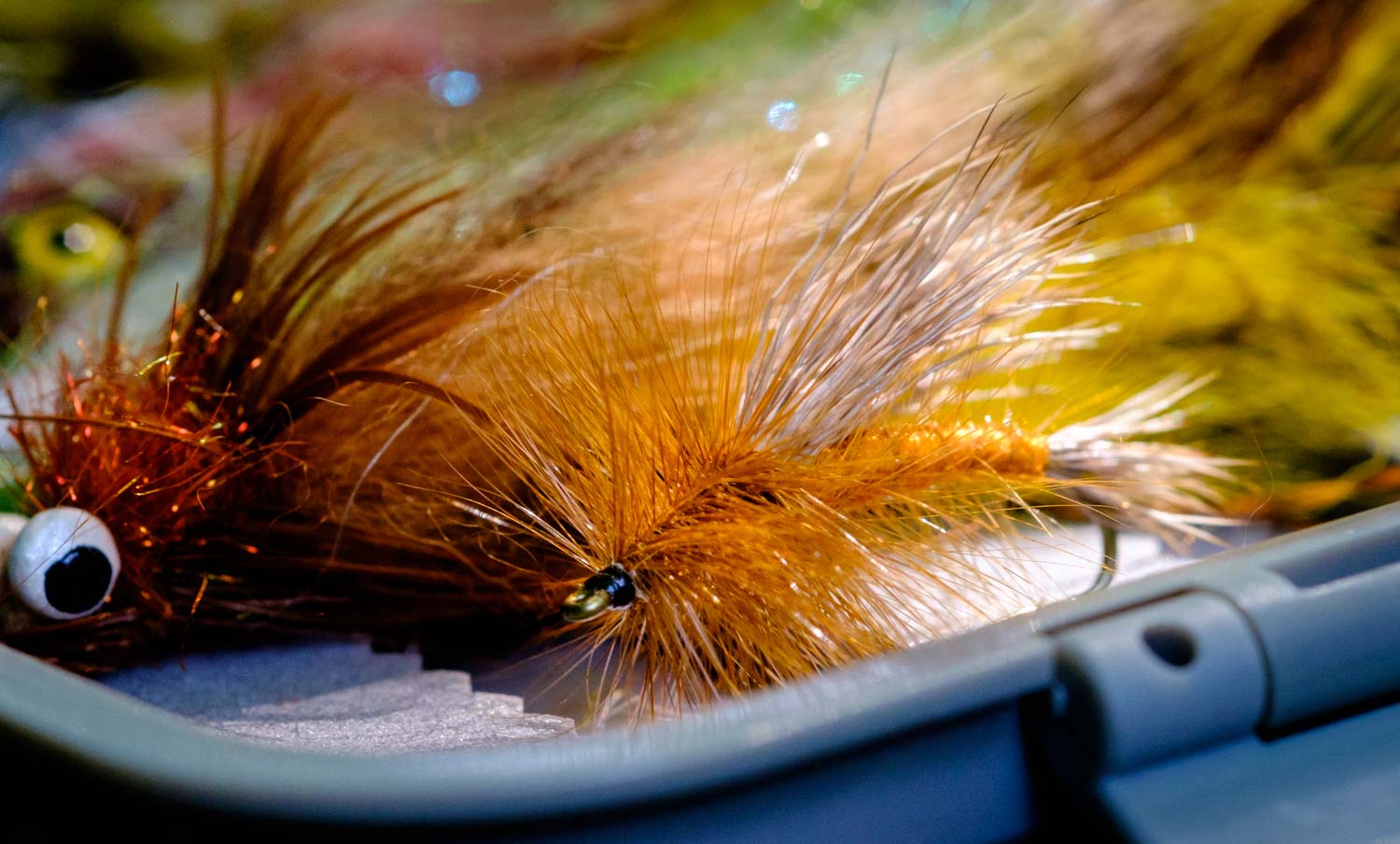
By Justin Pickett
A little something to entice those “window shoppers” that appear and disappear behind your streamer.
Anyone who has thrown streamers for trout has likely experienced the exciting visual of seeing a trout appear behind your meaty fly… following, following, following… only to peel off just outside the oars and leave you empty handed. Yes, it’s better than not seeing anything at all, but it sure would have been awesome to have gotten that fish to eat instead, right?
Why that trout aborted their chase can be due to several reasons. Maybe the color just wasn’t the right shade of olive to entice a strike. Maybe it caught sight of the boat. Maybe the movement of the fly wasn’t just right. Maybe it was too big. Or maybe it just wanted to torture you, getting your hopes up only to squash your morale at the last second. However, one thing I have learned from these non-committal trout, is that one of the easiest things you can do to entice that strike is to offer them a second, smaller fly behind your streamer.
Smaller, unweighted flies provide trout that might be hesitant at striking a larger fly with another option. Tie these flies onto the bend of the hook with approximately twelve inches of tippet and chuck away. This can be accomplished with articulated streamers as well. Just tie the second fly onto the trailing hook. This may affect the movement of your streamer however, I haven’t noticed much difference so long as unweighted flies are used. This has worked for me tons of times and in numerous locations.
BUT, WHAT IF YOU DON’T HAVE AN ASSORTMENT OF STREAMERS ON HAND?
Read More »Dial In Your Dry Fly Game
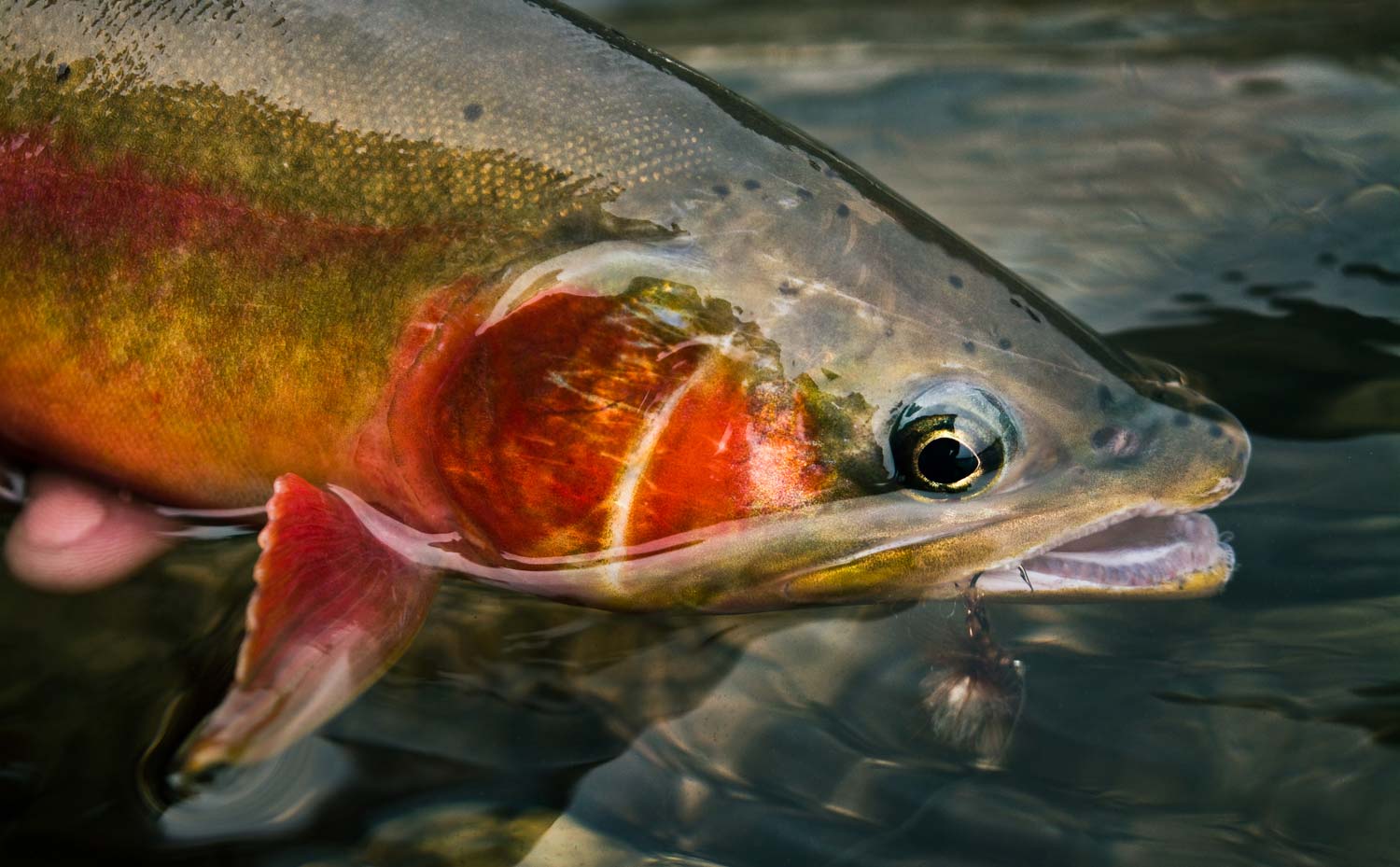
By Jason Tucker
Dry fly fishing is all at once the foundation, Holy Grail, and most difficult aspect of fly fishing.
In a bygone day, fly fishing meant using a dry fly. Now it has come to encompass many things, including drifting nymphs under a bobber, or chucking a streamer fly that more closely resembles a lure than a dry fly. I embrace it all, but there is still no greater thrill than matching a hatch, getting a perfect drift, and seeing a trout rise to your fly. For most of us it was that image that drew us to the sport in the first place.
With the dry fly season being at its zenith right now, we want to share a couple tips with you to help you catch more fish. I asked a couple friends of mine what their best suggestions are and here is what they said.
Erick Johnson is a fly angler from Michigan who also happens to be a customer service rep at Scientific Anglers. We got to sit around the campfire this spring on a dry fly trip and here’s what he had to offer:
“If you’re anything like me, the sight of a good rising trout raises your blood pressure a couple notches. Inevitably, the first thing we do is reach down and start stripping off line, certain that he’s going to eat on that first pass. Frequently, that first cast will either land right on the fish or go well beyond and likely put them down. Before casting to that sipper, settle yourself with a couple breaths and start in close. By taking a couple extra moments and measuring your cast, you can dial in that drag-free drift. Once you’ve established the drift, you can then carefully work your way out to a wary fish for the best presentation.”
I also go to fish with my buddy Alex Cerveniak, an excellent fly fisherman who spent a few years guiding to the picky fish on Michigan’s famed Au Sable River system. He had some advice on how to refine your presentation.
“The #1 key to fishing dry flies is to make your fly
Read More »Sunday Classic / Weather Dictates When and How I Fish My Terrestrials
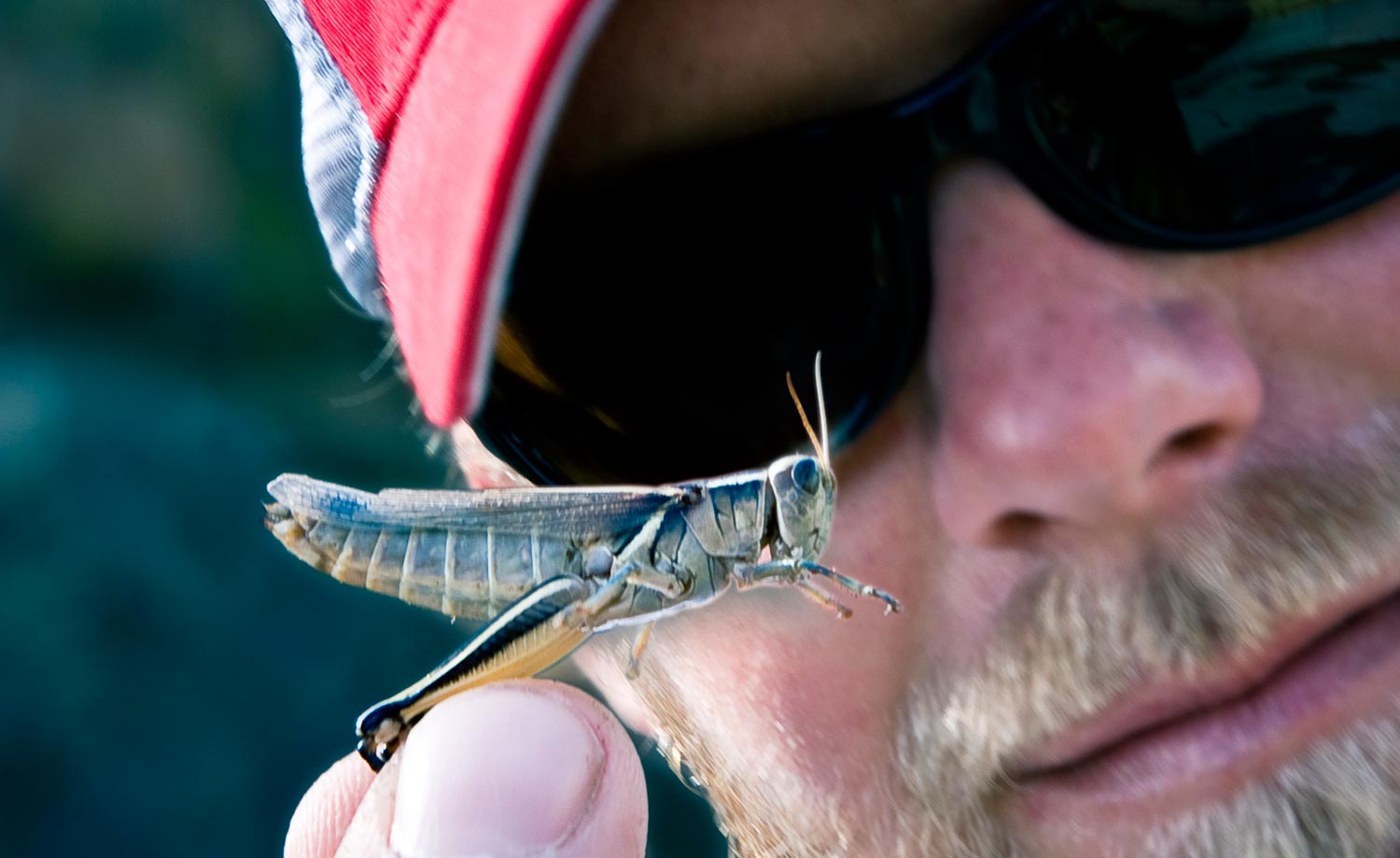
Every year, I’m asked by clients, when is the best time for them to come up and experience the terrestrial bite? For years, I kept a terrestrial fishing journal to help me better serve my clients. The journal documented the arrival times of specific terrestrials and when I first started catching fish on them. It seemed to help me for a couple seasons, but after that, I started to become too reliant on the data in the journal, and I lost sight of the most important variable of all in timing the terrestrial season–weather. Depending on what the weather is doing for the current year, it can speed up or postpone the arrival of the terrestrial season. Some years it will only sway the start of the terrestrial season a week in either direction, while other years, it can sway the arrival well over a month. Understanding the role weather plays in the lives of terrestrials can help anglers nail down more accurately when the terrestrial season will begin and peak in their area. If you can be one of the lucky few to time and start fishing terrestrials before everyone else does, you can be rewarded with some of the biggest fish of the year.
THE EFFECT WEATHER HAS ON TERRESTRIALS
Having consistent warm weather is a major factor in the arrival of terrestrials. Cold nights during late spring will keep terrestrials hiding in their burrows and out of sight during most of the day. During years when these cold snaps linger on, it will delay the arrival of the terrestrial season significantly. Sun is a major player in getting the terrestrial fishing going as well. I’m not 100% sure of this, but I think once the rainfall drops off in the summer, and the hot sun sucks out most of the moisture content found in the plants that the bugs are eating, the terrestrials are eventually forced to search out food sources that have a higher moisture content. It makes since to me at least, that the best places for the bugs to find moisture rich plants during the heat of the summer would be around water. All living things, including terrestrials, need water to survive. Furthermore, sun is the fuel for plants to grow, and many of our streams and rivers have large amounts of flowers that bloom (late spring, early summer) along the banks that provide food (nectar) for terrestrials. During above average rainfall years, where you’ve got more cloudy days than sunny days, it can inhibit or postpone the growth and blooming of these flowers that attract the terrestrials, and therefore, they won’t be attracted to the water and available to the trout. So when you’ve got a really wet spring and summer you can expect the terrestrial season to be late. It’s important to note also, that years with high rainfall, will significantly increase the water levels on our trout waters and postpone the terrestrial bite. Too much rainfall will keep the bugs from showing up, and raise water levels, which will discourage trout from expending the energy to rise to the surface to eat them, particularly if there’s sufficient food below the surface for the trout to eat. High water also flushes out terrestrials much quicker than during average water flows. You won’t find terrestrials swirling around in eddies for long periods of time.
WHERE TO FISH YOUR TERRESTRIAL PATTERNS FIRST
Read More »